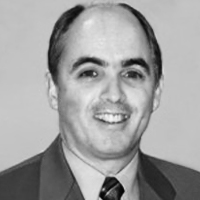Question
If one is not using ABR, what are currently the most time-efficient and sensitive tools for screening for retro-cochlear pathology?
Answer
One of the most comprehensive studies to evaluate the clinical performance of audiological tests designed to identify retrocochlear disease was conducted by Bob Turner and colleagues and published in 1984. They reviewed over 170 papers published between 1968 and 1983 and applied clinical decision theory to the evaluation of audiological, vestibular, and radiological test performance. The audiological measures included both behavioral and physiologic tests. Overall, test performance for the behavioral measures was poor (although specificity ranged from 82 to 93%, sensitivity ranged from 45% to 70%). Test performance was reasonably good, however, for both the ABR (specificity = 89% and sensitivity = 95%) and a combination of acoustic reflex thresholds and acoustic reflex decay (specificity = 85% and sensitivity = 84%). It should be noted that these data were reported prior to the availability of gadolinium-enhanced magnetic resonance imaging (MRIg) and, therefore, were based on the diagnosis of tumors larger than those that can be detected with current imaging technology. It would be reasonable to infer that the sensitivity estimates for all audiological tests would be poorer than those reported by Turner and colleagues if the results of MRIg were used as the gold standard. Indeed, since the advent of MRIg in 1987 there have been reports of decreased sensitivity of the conventional ABR in detecting small vestibular schwannomas (e.g., Chandrasekhar et al., 1995).
Although most of the behavioral site-of-lesion measures are time-efficient, their poor sensitivity reflects the absence of these tests from the contemporary diagnostic audiology test battery. Since the measurement of acoustic reflex thresholds is already part of the standard audiological evaluation, then one could justify the addition of acoustic reflex decay given its relatively better test performance (at least for larger tumors) and its brief duration (requires less than a minute of additional test time). At the end of the day, patients suspicious of retrocochlear pathology should be referred either for some combination of ABR and MRIg or for MRIg.
References:
Chandrasekhar, S., Brackmann, D.E., and Devgan, K.K. (1995). Utility of
auditory brainstem audiometry in diagnosis of acoustic neuromas.
American Journal of Otology, 16, 63-67.
Turner, R.G., Shepard, N.T., and Frazer, G.J. (1984). Clinical performance of audiological and related diagnostic tests. Ear and Hearing, 5, 187-194.
Dr. Murnane is the director of the auditory electrophysiology laboratory at the James H. Quillen VA Medical Center at Mountain Home and associate professor in the Department of Communicative Disorders at East Tennessee State University.

